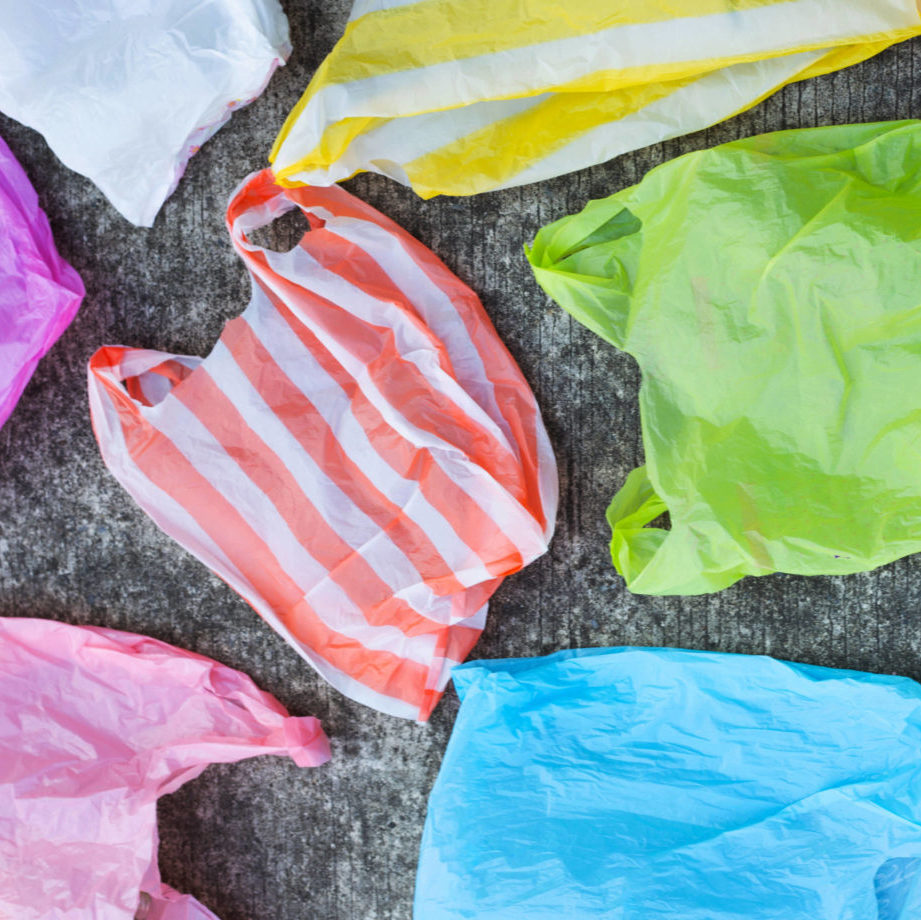We all have them, much as we may try to rid our lives of them. They’re hiding in our cupboards, in the trunks of our cars, sometimes stuffed into other bags like a secret we try to keep… until one day when we unassumingly reach into a reusable shopping bag and feel it…it’s – horror of horrors – a plastic shopping bag.
Yes, despite our best efforts, those relics of our single-use pasts can sometimes sneak back into our lives. Maybe you forgot your reusables at home and can’t carry everything to your car, or the bagger at the market snuck a plastic bag past you at checkout (they’re trained to bag items a specific way, unless specified otherwise), however, you ended up with one, the universal question remains: how do you recycle single-use plastic shopping bags? The same ones that float like ancient ghosts trapped in the branches of trees, wash up on beaches, clog storm drains, and eventually become microplastics – single-use bags, when not properly disposed of, have a lifespan longer than, well pretty much any creature on earth. It takes approximately 1000 years for a plastic shopping bag to decompose, which means plastic bags that were manufactured in 1979 – that’s when single-use bags became available to consumers in the U.S. – are still around today. That’s a long time, and a lot of bags – to put it more specifically, we use about 160,000 bags per second, adding up to about five trillion bags per year. And only about 1% of those bags are actually recycled.

What happens to the rest of those bags? It’s an overwhelming thought for anyone working to reduce their use of single-use plastic and support sustainability in their town or city – and disheartening when you see so many people still leaving markets and stores with arms full of plastic. What if there was a way to turn those bags into something that would not only use up hundreds of bags at a time but benefit people in need at the same time in your community? Some people are doing just that by turning plastic bags into craft supplies – or “plarn” (that’s a mash-up of plastic and yarn) and transforming them into something remarkable: sleeping mats for the homeless. High school kids, American Legion members, seniors – a simple search in your browser will yield hundreds of examples of people gathering together and learning how to crochet protective sleeping mats for people in need from plastic bags. Though the idea has been around for a while, this post from Australian climate non-profit 1Million Women could be seen as the catalyst for the idea.
What makes plastic bags so ideal to be used for these DIY sleeping mats? Ironically, the thing that makes them so terrible for the environment is also what makes them useful: their durability and availability. It takes anywhere from 500 to 700 plastic bags to make one mat, which means crafters can use up a lot of plastic bags that might not otherwise be recycled (don’t think you can find 700 plastic bags? Put out a call in your community…we promise you’ll have more than enough). Additionally, once completed, these mats provide cushioned and protective insulation from the cold ground, and when not in use, are lightweight enough to be carried or strapped to a backpack.
While these mats are not a solution for the epidemic of single-use plastic bags, they are a way to help people while using up bags that are already out there. Ready to get crafting? Check with local shelters and non-profits to see if there are groups already out there making mats in your area, and if not, ask if you can get one together! If you or other members don’t crochet, there are still plenty of tasks involved where you can lend a hand – check out this post from a group making mats for homeless veterans for a run-down of jobs to assign your volunteers. And when you’re ready to get started, this video, from a group of seniors in British Columbia, gives a great overview of how to make a mat.
You might also consider holding a drive for reusable shopping bags at the same time, so people who donate their plastic bags can swap them for reusable totes. A 1:1 way to reduce the plastic used in your community and make a measurable difference for the planet and people in need!
Have you used plarn before? Share your tips with us by tagging us on social @AvocadoMattress and #AvocadoGreenMagazine!

Shop Pillows
The Essential Organic Pillow Collection
Gentle, breathable, non-toxic support.






